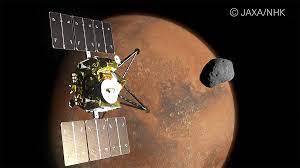 Sending missions to Mars have been one of the forefronts of many space agencies across the world. Naturally, especially NASA has been busy sending various Mars missions including the latest Perseverence mars mission that has the world’s first Martian helicopter exploring the terrain. In addition, Russians during the soviet era have sent various Mars missions and we will have to add Indian Mars mission which cost less then the movie gravity. In addition, Chinese and UAE have sent Mars missions in 2021 as well.
Sending missions to Mars have been one of the forefronts of many space agencies across the world. Naturally, especially NASA has been busy sending various Mars missions including the latest Perseverence mars mission that has the world’s first Martian helicopter exploring the terrain. In addition, Russians during the soviet era have sent various Mars missions and we will have to add Indian Mars mission which cost less then the movie gravity. In addition, Chinese and UAE have sent Mars missions in 2021 as well.
Japanese space agency scientists said they plan to bring soil samples back from the Mars region ahead of the United States and China, which started Mars missions last year, in hopes of finding clues to the planet’s origin and traces of possible life.
The Japan Aerospace Exploration Agency, or Jaxa, plans to launch an explorer in 2024 to land on Phobos, a Martian moon, to collect 10 grams of soil and bring it back to Earth in 2029.
The rapid return trip is expected to put Japan ahead of the United States and China in bringing back samples from the Martian region despite starting later, project manager Yasuhiro Kawakatsu said in an online news conference.
Nasa’s Perseverance rover has landed in a Mars crater where it is to collect 31 samples that are to be returned to Earth with help from the European Space Agency as early as 2031.
China in May became the second country to land and operate a spacecraft on Mars and plans to bring back samples around 2030.
Jaxa scientists believe about 0.1% of the surface soil on Phobos came from Mars, and 10 grams could contain about 30 granules, depending on the consistency of the soil, Kawakatsu said.
Collecting samples from multiple locations on Phobos could provide a greater chance of obtaining possible traces of life from Mars than obtaining soil from a single location on Mars, he said.
Any life forms that might have come from Mars will have died because of harsh solar and cosmic radiation on Phobos, Jaxa scientists said.
The Nasa and the European Space Agency missions focus on potential life forms and evolution of the area of the Jezero crater, believed to be an ancient lake.
By studying Phobos soil samples including material from Mars, scientists hope to learn about the evolution of the Martian biosphere, Usui said.



































Add Comment